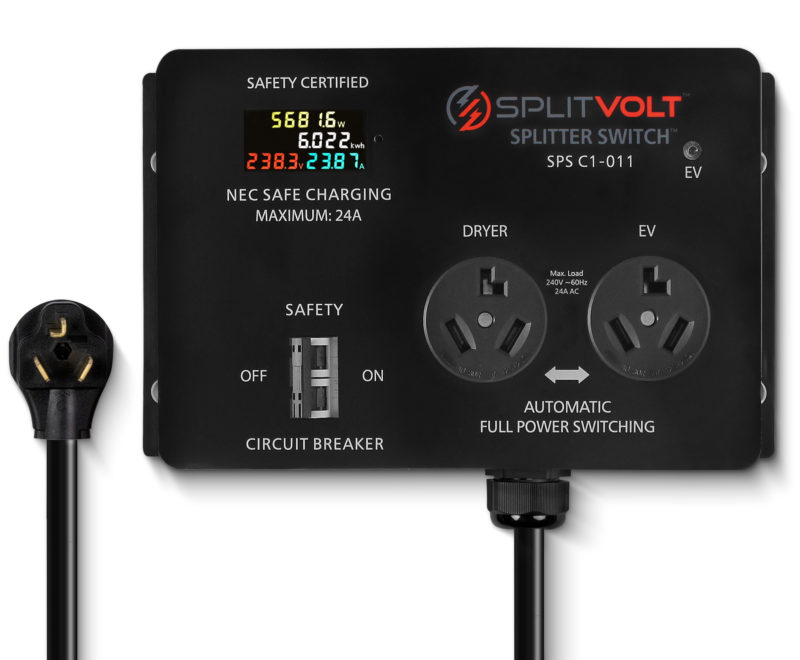Is Level 1 Home EV Charging Safe?
 So much of our life’s modern necessities and extravagances are based on electricity. We live in an electric world, and it’s only becoming more so. Our biggest tool of all, our car, is becoming electric for more and more of us every day. Being so big, a car brings a new element to the basic activity of plugging in and charging than what we’re all familiar with. The question that everyone who buys an electric car faces is: “how should I charge it?” There’s a large variety of answers that depend on the situation of the EV owner. However, there are also some facts that hold true across the board.
So much of our life’s modern necessities and extravagances are based on electricity. We live in an electric world, and it’s only becoming more so. Our biggest tool of all, our car, is becoming electric for more and more of us every day. Being so big, a car brings a new element to the basic activity of plugging in and charging than what we’re all familiar with. The question that everyone who buys an electric car faces is: “how should I charge it?” There’s a large variety of answers that depend on the situation of the EV owner. However, there are also some facts that hold true across the board.
When it comes to home EV charging, you clearly don’t want a superfast public DC charging station — it would cost a fortune, and charging at a high rate of power wouldn’t be possible in most situations anyway. The two main options are really 120V “level 1” charging and 240V “level 2” charging. The former will charge at a few miles per hour, while the latter will charge 7 times faster (21mph) in that time. Many choose the latter for that reason, paying more for a level 2 charger and considerably more than that again just to install a 240V outlet or upgrade their electricity panel. Others choose the former because even adding a few miles an hour, over 10 or 15 hours is more than the typical person drives in a day. However, there’s something beyond speed that should apparently be on the mind of people weighing these options: safety.
I recently had a long conversation with Splitvolt CEO and founder Dan Liddle about this topic that was quite illuminating. He brought a few things up that I’ve never heard anyone else talk about. First of all, although the 120V power draw is lower, having that power draw for many hours on end can present issues. Dan pointed out that unlike a 240V circuit that connects directly from the house panel to the dryer, a 120V outlet may share electricity infrastructure with multiple parts of the house, and adding other power draws on top of hours of power being pulled for your car is something you should be aware of and can potentially be cause for concern.

“Here’s the really important consideration: The U.S. National Electric Code (NEC), when it was defining circuit and component ratings for home wiring, it was for appliances which were regularly on and off. These ratings were not for electric vehicles which are unique in that they can continuously charge for over three hours straight – often even for 5–10 hours. Regardless of whether it was for a normal 120V circuit or a 220V circuit, they were expecting things to be on for a while, and then off, and then on,” Dan noted. “With the advent and adoption of electric vehicles, since those can charge for well over 3 hours continuously, the NEC determined that it’s not safe for your wiring to charge at the full rating of your circuit beyond 3 hours, so they changed the code to require a 20% buffer.” So, to shorten this up: they want you to only do 80%.
“So, let’s say you’re thinking about a standard 240V dryer circuit — that’s 30 amps, so the NEC says you can only charge an EV safely at 24 amps using your 30 amp circuit. They want that buffer because it’s going to run over 3 hours, and likely even 8 hours, so they don’t want to overheat your wiring. Your standard household breaker on your dryer circuit is set for 30 amps, which is well above the 24 amp safe limit, so it would not necessarily protect your wiring. This NEC buffer requirement is also true for your standard 120 volt trickle charger. So, it’s 120V, and you might have a 15-amp circuit, which means that, according to the national electric code, you don’t want to charge more than 80% of that 15 amps which is 12 amps of charging total on that circuit.
“So, here’s the difference and why the trickle charger that comes with your EV might be less safe than you think: The 120V circuits in your home are connected to many different sockets and often across multiple rooms. So, you won’t even necessarily know which ones are connected on the same circuit.
“So, if you happily go and plug your new 120V trickle charger into your new EV and set it for the 80% rate (12 amps charging on 16-amp circuit) you could still unknowingly be exceeding the safe charging rate because in another room, another appliance, TV, heater, or other device could be on that same circuit, thereby pulling far more than you should on that circuit. So what this all means is that when using a 120 volt trickle EV charger, it can be much easier to exceed the NEC maximum safe charging rate for your home wiring without even knowing it.”
Talking through it, a metaphor came to mind. While it may be easier on the vocal cords to talk than to sing, if you talked nonstop for 12 hours, that would probably wear out your voice more than singing for an hour or two. And if you throw some more requests on those vocal cords after several hours of talking, well, you might not want to do that.
I asked for more details on what exactly could result from exceeding the NEC maximum continuous safe charging rate for extended periods. “It really depends upon the circumstances, and can be hard to predict. We strongly recommend following the NEC standards for safety, and consulting an electrician if you are ever unsure about your home wiring or specific codes in your area. You can imagine that if you are overdrawing your circuits, it might not be an issue for a certain window of time, but if it’s overheating the wiring for extended periods, you might be jeopardizing the integrity of the wiring, insulation, plastic, or connectors in your walls, potentially without ever tripping your house panel breaker. This risk would seem to only increase after weeks, months, or years.” This is why Dan and Splitvolt recommend level 2 charging.
If you go the 240V route to get the 7x faster charging at home, the easiest and cheapest option is to utilize a dryer outlet that’s already in place rather than have an additional costly 240V circuit installed. But what if your dryer outlet is already in use? That’s where Splitvolt comes in and offers a unique solution — its innovative “Splitter Switch” lets you plug two things into one 240V outlet — but in a safe and automatic fashion. The most common appliance to be using a standard 240V 30 amp outlet is a clothes dryer. Using the Splitter Switch, you can safely plug in both the dryer and your electric car at the same time and it will automatically switch power to one or the other at a time, never both simultaneously — this could overload your circuit.
Equally critical is that the Splitter Switch has an internal circuit breaker inside the unit. This breaker is set to the maximum safe charging rate, and ensures you cannot accidentally overdraw your circuit. There are other 240-volt power-switching products on the market, but they lack an internal breaker and depend upon the house panel breaker — which as we have discussed is set too high for continuous EV charging and would not protect the wiring. Those products also lack additional Splitvolt safety features including real-time power status display, a manual override power-off switch, and a flexible pigtail plug for safe orientation. The Splitter Switch is also the only cETLus safety certified product in this new category. Sure, Splitvolt charges faster, saves money, saves time, but ultimately, the company brings it back to safety again — after all, what can be more important than that?
“So the safety checklist for power switching products to be as safe as possible are: automatic power switching, internal circuit breaker, real-time status display, manual power-off switch, and a flexible plug cord for safe orientation. Having a safety certification is important, but by itself is insufficient if you do not also have these important safety features.”
That sounds like a compelling case.
Again, different needs may mean different preferred charging options, but the ability to inexpensively and safely use power from an existing 240V dryer outlet to charge your EV, rather than pay thousands of dollars to add an additional circuit is compelling. EV charging every day or every other day seems like an option that would serve many EV drivers ideally.
This article is supported by Splitvolt.
Have a tip for CleanTechnica? Want to advertise? Want to suggest a guest for our CleanTech Talk podcast? Contact us here.
Latest CleanTechnica.TV Videos

CleanTechnica uses affiliate links. See our policy here.

